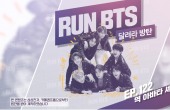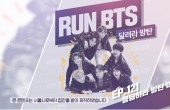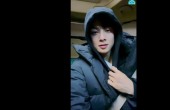Home > Feature
Ghost hunting in the dark alleys of Seoul
Thrill seekers visit haunted areas to discover spirits that linger after death
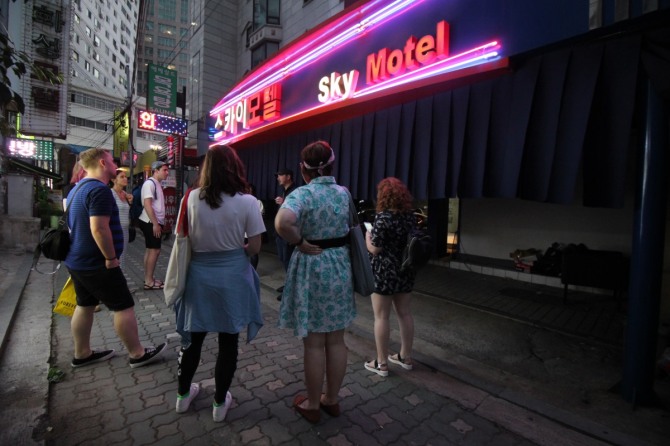 |
| International travelers and expats participate in Korea’s only “Ghost Tour,” which takes them on a guided walk through locations known to have a dark or superstitious history. (Julie Jackson / The Korea Herald) |
Korean history and its appalling stories fascinate Joe McPherson, president of ZenKimchi food blog and the guide of the Dark Side of Seoul tour that runs every Friday and Saturday in the bustling areas of Jongno, Gwanghwamun and Cheonggyecheon Stream.
“The reason I started is I love ghost stories. Every major city has dark tours such as Jack the Ripper tour in London, and Seoul didn’t have one,” he said before last Saturday’s tour. It took more than a year of research into the Korean history and some dark stories behind it.
The tour covers a wide area with some 20 to 30 stops in the major spots of the city. Starting from Bukchon area near Anguk Station, the walking tour winds through the alleys of Jongno lined with local eateries and love motels and the tourist district of Insa-dong to Cheonggyecheon Stream.
Now filled with local eateries selling grilled pork belly meat and soft tofu stew, the narrow alley near Anguk Station was where a bloody coup d’etat took place in the 15th-century during the Joseon era. Suyang, an ambitious uncle of the 12-year-old King Danjong, ambushed the king and his entourage here and killed so many people that they couldn’t count all the bodies.
“The smell was so bad that they had to burn the area to purify the land. This area became called the alley of ashes since then, today called the neighborhood of ashes, Jae-dong,” explained McPherson during the tour.
The tour is usually attended by 10 people on average that mostly consist of international travelers and expatriates in Korea. Its peak season is around Halloween in September and October. But the tour gets more Korean guests during the summer, looking for some summer night excitement in the daunting history.
“I like things related to spiritual things. The tour looked interesting with some keywords like ‘ghost night’ and ‘dark night’ popping up for me on the Internet,” said Gillian Witter.
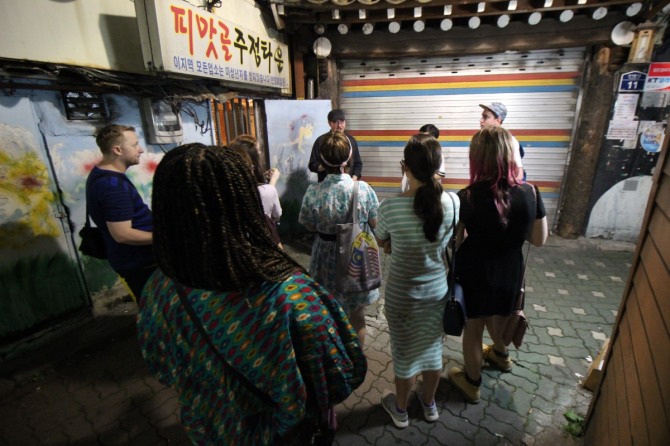 |
| International travelers and expats participate in Korea’s only “Ghost Tour,” which takes them on a guided walk through locations known to have a dark or superstitious history. (Julie Jackson / The Korea Herald) |
“A Korean celebrity was driving along the Jayuro Highway and saw a woman wearing huge sunglasses while hitchhiking. As he got closer, he realized that those were not sunglasses, they were eye sockets,” he said under the dim light in Cheonggyecheon Stream.
Many of urban ghost stories in Korea are related to places and are particularly associated with the three must-visit haunted houses ? an old mental hospital in Gonjiam, Gyeonggi Province, old grilled beef restaurant Neulbom Garden in Jecheon, North Chungcheong Province and an abandoned house in Yeongdeok, North Gyeongsang Province.
Horror stories created from the once-haunted grilled beef restaurant in Jecheon often feature a female ghost with a pale white face, guiding restaurant guests to parking spots that turn out to be a deep, muddy paddy fields, or taking orders from guests that are never delivered to the kitchen.
Another haunted house in Yeongdeok is notorious for having too many ghosts from different periods of time that even Korean shamans hesitate to come near.
Ghost seekers who visit often share similar symptoms of sudden headaches -- a sign of being possessed by spirits.
“When I entered a room on the second floor, the window was open towards a mountain, I felt cold despite it was in the middle of the day. And I started having a headache,” blogger Mozambique Drill wrote on the blog Seeing Ghosts.
The place was, it turned out, where more than 700 student soldiers died in a battle during the Korean War in 1950. Most of the student soldiers, assigned to cut the North Korean supply route, were killed by the North Korean special forces before their backup troops arrived. Some 700 young soldiers, except a few who survived luckily, died or went missing, and were never found.
By Lee Woo-young (wylee@heraldcorp.com)
















